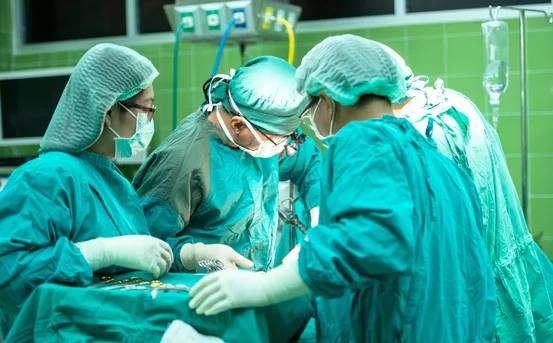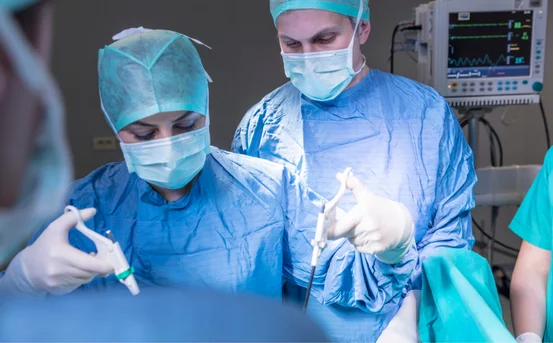Surgical periodontics is designed to manage periodontal disease or gum disease. It becomes indicated when scaling and root planing do not bring about the necessary improvement of the gums. The goals of treatment for periodontal surgery are to remove all causative bacteria from below the gums while performing debridement, repair overlying tissues which have undergone necrosis, and resupply with bone supporting structures which they are structurally deficient.
Gum disease culminates in a progressive destruction involving soft tissue and bone support around the teeth. If untreated culminates in loss of teeth, halitosis, oral bleeding as well as systemic conditions like heart ailments, diabetes, and stroke.
What Is The Need For Surgical Periodontics?
This is unlike any other procedure since it treats advanced stage gum disease (periodontitis). Under this category treatment cannot be provided since no further mechanical means can be attempted on the patient. Some of the reasons one-party professionals would classified include:
- Acute Infection
At this stage where infection has progressed up to the alveolar bone no conservative modality will work. Access is mandatory for thorough scrubbing devoid of impure matter or micro-organisms.
- Recessed Gums
Alongside advanced gum diseases comes root exposure therefore leading to increased sensitivity and chances of caries estimation. Certain periodontal measures especially termed gum grafting aims at replacing deficient stiff tissue incorporating giving softer structure coverage to root portions as well adding cosmetic appeal for gingivae.
- Reduction of Pocket Depth
As gum disease worsens, bacteria-laden pockets form between the gums and teeth. Periodontal flap surgery is indicated to alleviate pocket depth and facilitates oral hygiene maintenance.
- Loss of Bone:
Bone loss due to periodontitis may require surgical intervention such as bone grafting to restore the lost bone and ensure retention of the teeth.
- Restoration Aesthetic Functional
Periodontal surgery not only serves health purposes but also improves the aesthetics of the smile and gum contouring. Additionally, some procedures like crown lengthening are performed for restorative or cosmetic purposes.
Treatments Category for Periodontal Surgery
Understanding of treatment for periodontal surgery
Based on the severity of gum disease, there are numerous surgical approaches with differing objectives. The main categories include:
- Flap Surgery (Pocket Reduction Surg):
This is one of the most frequent operations done. The dentist lifts back the gums, cleans deep tartar-laden pockets, and sutures them back tightly after meticulous cleaning.
Advantages: It reduces depth and encourages reattachment of the gums to the teeth.
- Gum Graft Surgery
For receding gums, soft tissue can be harvested from palates or donor areas to cover exposed roots.
Advantages: Diminished sensitivity while providing protection against decay for tooth roots.
- Bone Grafting
Bone grafts are utilized to supplant lost bone due to periodontitis. The new bone may be synthetic or taken from the patient or a donor.
Benefit: Regenerates lost bone and provides stability to the teeth.
- Guided Tissue Regeneration
A barrier is installed between the bone and gum tissue with the intent of hindering the resorptive processes that occur in active periodontal disease so as to stimulate osteogenesis for areas of previous bone loss.
Benefit: Facilitates natural healing for bones and tissues.
- Laser-Assisted Periodontal Surgery
Infected tissues can now be removed using lasers which carry out this function more efficiently than previously done with less intrusive methods, thus resulting in reduced bleeding and quicker recovery of the surgical site.
Benefit: Reduction in discomfort and recovery time when compared to conventional surgeries.
What To Expect During Periodontal Surgery
Before The Procedure
- The patient’s mouth is thoroughly assessed clinically
- And possibly x-rayed for possible osseous destruction.
- Infiltrative anesthesia techniques are used.
During The Procedure
Flap surgery, grafting, or regeneration; these procedures will all be carried out by a responsible dentist/periodontist according to their treatment plan decisions.
Cleaning should also be performed on the area together with suture placement if needed
Aftercare and Recovery
The proper aftercare revolves around postoperative steps that are necessary to promote recovery; for example:
- Adhering to the prescribed medication regimen of antibiotics or analgesics.
- Refraining from rinsing the mouth with unprescribed ixes.
- Sustaining good oral hygiene practices while not consuming any chewy or spicy foods for a brief period.
- Maintaining proper dental procedures.
Follow-up appointments within a week of the procedure are roughly required to lose stitches and assess progression.
Benefits of Periodontal Surgery
Stops development of severe gum disease:
- Prevention of teeth breaking down:
- Repair of undermined bone and gum health:
- Cosmetic enhancement of smile:
- Holistic long term oral care improvement:
Systemic health issue risk associated with periodontal disease reduction:
Risks and Considerations
There are risks involved regardless of undergoing surgery, these include but are not limited to:
Periodontitis related difficulties such as tarnished professional image infection, decreased productivity infection, excessive symptomatic bleeding from capillary vessels during surgical intervention, inflammatory swelling, raised uncomfortable tissue tension circular grin (in some cases), increased skin loose-lipped smirk (slow) allergic response from local numbing agent injection.
Such complications tend to arise when a surgeon lacks experience in performing surgeries on the regions specified under trained parts alongside failing decorative aftercare.
Conclusion
Gum disease Periodontology surgery remains one ground treatment procedure that works best for patients burdened by advanced stages chronic periodontal diseases ever than decaying untreated spaces within jaws afflicted abscesses leading bones render grievous damage undergo permanent irreversible injuries
Patients electing for periodontal surgery are able to:
- Regain their oral vitality
- Enhance esthetics as well as psychosocial confidence.
- Decrease the probability of severe health complications associated with relentless inflammation.
These patients can maximize their outcomes if they seek a periodontist when experiencing persistent symptoms like abscessed gingivae, halitosis, receding gums, or dental mobility. Timely treatment can preserve your dentition and your esthetic smile.






















